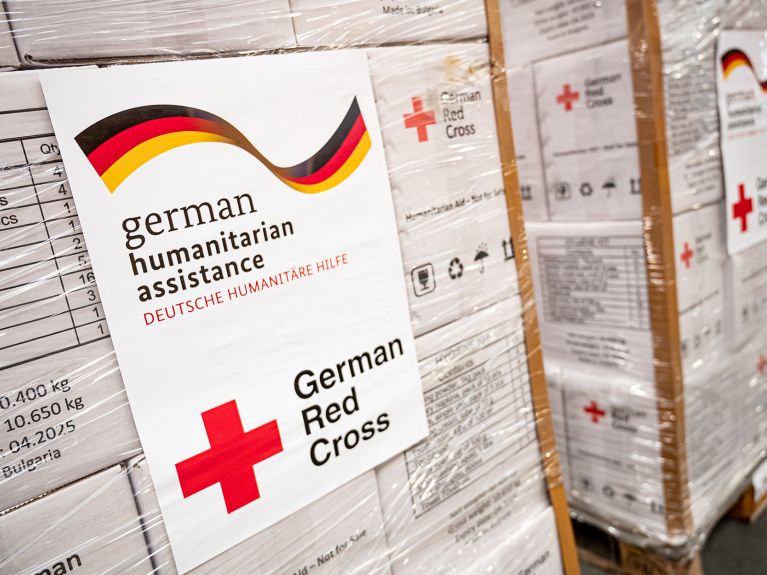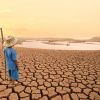Crises that go unnoticed
In all regions of the world there are conflicts that attract virtually no public attention. This can have devastating consequences.

Dieses YouTube-Video kann in einem neuen Tab abgespielt werden
YouTube öffnenThird party content
We use YouTube to embed content that may collect data about your activity. Please review the details and accept the service to see this content.
Open consent formThey live in makeshift shelters, tents and huts, closely cramped together and often without running water, waiting for an opportunity either to return to their homeland or to go somewhere else. Most of them are Rohingya Muslims from Myanmar. They are not recognised there as an indigenous group, which is why large numbers of them fled to Bangladesh to escape persecution by the military regime.
Desperately reliant on help from outside
Yasin is a young man with dreams – despite all the adverse circumstances he faces. He would like to become a translator and doctor and help others. Since there is no formal education on offer in the camp, he uses the time to learn English, mainly via YouTube videos and other online services. He has already built up a large vocabulary. Because he believes that education gives people new opportunities, he passes his knowledge on: Yasin teaches English at the camp on a voluntary basis, which serves to ease the great suffering there at least a little. Even six years after the exodus, the suffering continues.
The people here not only lack prospects, they are literally struggling to survive, as there is not enough healthcare on offer, the water supply is inadequate and there are frequent food shortages. And all of this goes largely unnoticed by the rest of the world, even though they are desperately reliant on help from outside.
Increasingly often, natural disasters are to blame
As deplorable as the conditions are in Cox´s Bazar, this is by no means an isolated case. Dramas are silently playing out in many regions around the world but go unnoticed for the most part. They are unfolding in places such as Haiti or Venezuela, in Burkina Faso or Burundi, in the Democratic Republic of Congo or in Yemen, in South Sudan or Lebanon. In some cases it is internal conflicts that are to blame, while in others it is external circumstances such as drought or flooding, increasingly often as a result of climate change.
At the end of 2022, around 300 million people were dependent on humanitarian aid, most of whom live outside the public eye. Depending on the method of calculation, there are between ten and 20 such crisis hotspots around the world that do not make it into the main news broadcasts of most countries. It almost seems as if the world could only ever keep track of and focus attention on a handful of selected crises at any one time. At present, the global public is mainly following the war in Ukraine and the consequences of the earthquakes in Turkey and Syria. Virtually no attention is paid to anything else.
Little attention also means little money
And this has consequences. In many cases, less money flows to such regions. South Sudan, for example, repeatedly experiences severe flooding due to climate change. In 2021, it was even the case that half of all the country’s districts found themselves under water, affecting 850,000 people. Their homes were simply swept away, destroying their livelihoods - and their hopes.
In addition, there are numerous conflicts between tribes and groups. All of this makes for a complicated situation that renders the country unstable and vulnerable and also gives rise time and again to famines. South Sudan does not have the resources to alleviate the suffering on its own. Yet the flow of money from abroad is insufficient: OCHA, the United Nations Office for the Coordination of Humanitarian Affairs, calculates that international aid in South Sudan is currently a good 72 percent underfunded. The figures are similar for Yemen, Somalia and Mali, at 80 percent, 90 percent and 64 percent respectively These are just a few examples from a long list.
Potential for the next major conflict
Lebanon is also overstretched due to what is really an international problem. The country is handling a gigantic number ofrefugees: Hundreds of thousands of Syrians have sought refuge in their neighbouring country in recent years; one in seven of Lebanon’s inhabitants is now a refugee. The situation is compounded by political turmoil and an economic crisis complete with rampant inflation, with the result that this once prosperous country in the Middle East now finds itself on a downward trajectory that has already been lasting far too long.
However, the fact that the international public does not focus its attention everywhere and does not provide enough active help does not by any means imply that these crises are “harmless” or limited to just one local area. The next major conflict could flare up anywhere. Ukraine also kept under the political and strategic radar for many years. Who knows where the Rohingya crisis will spread to next? Or the unstable situation in Lebanon?
Learning from the past
It is clear, if we look even further back into the past, that no attention at all had been paid to the conflict in Rwanda that led to an appalling genocide in 1994. Subsequently, it intensively preoccupied the United Nations at all levels for years.
In the 1990s, Iraq was not in our sights as the potential next conflict region either. When the war there finally escalated, it cost the international community a lot of money and effort and subjected the West in particular to a painful test of its cohesion. It may be possible to explain this selective perception given how many challenges there currently are, yet it is nonetheless unfair, economically short-sighted and (geo-) politically dangerous.
______________________
For this reason, Germany’s Federal Foreign Office has initiated a campaign intended to shine more of a spotlight on these silent crises again: “Into Focus” will be implemented by numerous non-governmental organisations, including Caritas International, Terre des Hommes and Kindernothilfe. Another of its partners is the UN Refugee Agency UNHCR. More information about it can be found here.



